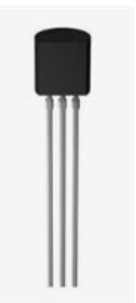Date:2025-06-26 Categories:Product knowledge Hits:371 From:Guangdong Youfeng Microelectronics Co., Ltd
NPN transistor is a commonly used electronic component, widely used in electronic circuits. It is an IRS2003STRPBF bipolar transistor consisting of three regions: emitter region, base region, and collector region. Below, we will provide a detailed introduction to the basic structure, performance characteristics, working principle, applications, experimental methods, component roles, and market prospects of NPN type transistors.
1、 Basic structure:
An NPN transistor is composed of a P-type semiconductor material sandwiched between two N-type semiconductor materials. Among them, the P-type material sandwiched in the middle is called the base region, and the N-type materials on both sides are called the emitter region and the collector region, respectively. There is a PN junction between the emission region and the base region, and there is also a PN junction between the collector region and the base region.
2、 Characteristics:
1. Amplification function: NPN transistor has the function of amplifying current and voltage, which can amplify weak current or voltage of input signal into larger current or voltage of output signal.
2. Switching function: When the NPNtransistor is in saturation state, it can completely conduct the circuit and act as a switch. In the cut-off state, the circuit is disconnected, playing a role of disconnection.
3. High input impedance: The base input impedance of NPN transistors is relatively high, which can reduce the impact on the input signal source.
4. Fast response: NPN transistors have fast switching speeds and can quickly respond to input signals.
5. Good stability: NPN transistors have good working stability and can operate normally under different temperature and voltage conditions.
3、 Working principle:
The working principle of NPN transistor is based on the forward and reverse bias of PN junction. When the voltage between the base and emitter is forward biased, electrons in the base region will move towards the emitter region, forming a current. This current will be collected by the collector area, forming an amplified current. When the voltage between the base and emitter is reverse biased, current cannot flow.

Previous: Classification, Structure, and Principle of MOSFET